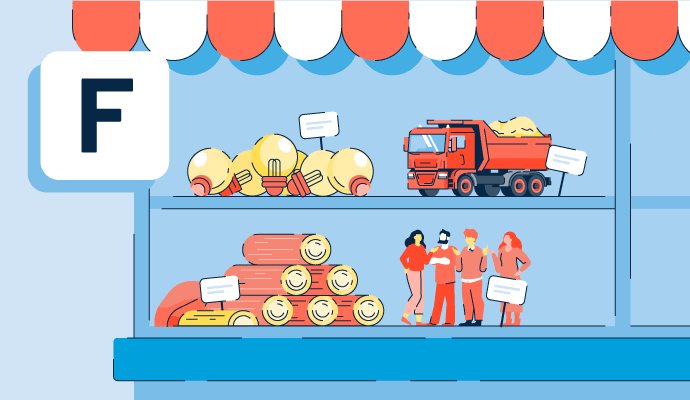What is the factor market?
The factor market, also known as the input market, is where businesses buy the goods and services they need for production. These goods and services are known as the factors of production: labor, land, capital, and entrepreneurship.
Typically, households are considered the suppliers and businesses the purchasers in the factor market. For example, skilled laborers looking for a job enter the factor market, and businesses purchase their labor by paying them a wage.
The factor market stands in contrast to the goods and services market, also known as the output market. With the output market, consumers purchase the final products and services the businesses have created with the factors from the input market.
Recruitment platforms help human resources professionals source, screen, and hire qualified candidates from the factor market. Companies use this software to centralize applicant data and create a streamlined workflow for hiring.
Types of a factor market
The factor market relies on the availability of the factors of production. Economists recognize four primary factors:
- Labor: People contribute mental and physical effort toward producing goods and services in the factor market. In exchange, businesses pay them wages.
- Land: Businesses rely on the land and its resources as inputs to create goods and services. The land itself can be used for commercial development or agriculture. Or, companies can tap it for raw materials they need for production, such as oil, water, or wood. Landowners receive rent when companies use their land or its resources.
- Capital: Companies often need specific tools, machines, and buildings for production purposes. Despite its name, capital does not refer to money. Companies pay interest for use of capital in production.
- Entrepreneurship: Economists recognize a fourth factor of production that bridges the other three. Entrepreneurs create innovative products or services using labor, land, or capital. The income earned by entrepreneurs in exchange for their efforts is called profit.
Factor market examples
There are some specific examples that can help those understand a factor market.
An example in a labor market would be a car mechanic provides labor to an auto mechanic shop in exchange for an hourly wage. The labor of the employees is the factor market.
In a capital goods market, equipment, tools, and machines are examples. Capital might include a warehouse and a forklift at an industrial park or a panoramic X-ray machine at a dentist's office.
And, in a land market, land for hire or purchase and raw materials are often the established factor markets.
Why are factor markets important?
The factor market is a vital part of a market economy, a system controlled by the forces of supply and demand. Put another way, individuals and businesses, rather than the government, play an operative role in economic shifts.
In a market economy, businesses turn to the factor market to source what they need for creation, make the goods and services, and then sell them in the goods and services market. Without the factor market or the other two steps, the system would fall flat.
Factor market vs. product market
The factor market and the product market are both essential components of the market economy. However, the markets stand at opposite ends of the system.
Factor market
The factor market is called the input market because businesses seek labor, land, and other resources to make their goods and services here. The demand for resources in the factor market comes from the products they create, a concept called derived demand. For example, if there is increased demand for corn, there will be more demand for the fertilizer used in the production of corn.
Product market
The product market, on the other hand, is known as the output market or the goods and services market. The product market is not a physical place like a storefront; instead, it’s the concept of the entire commercial marketplace in which buyers and sellers interact. In the product market, the forces of supply and demand connect, with businesses creating supply and customers creating demand – and prices being adjusted accordingly.

Kelly Fiorini
Kelly Fiorini is a freelance writer for G2. After ten years as a teacher, Kelly now creates content for mostly B2B SaaS clients. In her free time, she’s usually reading, spilling coffee, walking her dogs, and trying to keep her plants alive. Kelly received her Bachelor of Arts in English from the University of Notre Dame and her Master of Arts in Teaching from the University of Louisville.

